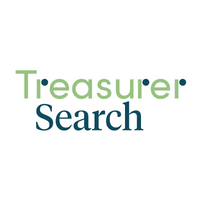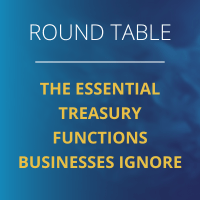Lee-Ann Perkins, Treasury Advocate, Nacha Advisory Board member, and Assistant Treasurer, believes that as finance professionals, it’s our imperative to foresee change and acknowledge disruptions. The pace of technological advancement and global trends is unparalleled. Those who don’t evolve with these rapid transformations face the looming risk of obsolescence.
The Duty of a Modern-day Treasurer
Lee-Ann emphasizes the fiduciary duty that treasurers hold in safeguarding a company’s financial assets. As stewards of a company’s financial health, any misstep could spell not just financial but also reputational peril. But on the flip side, continuous professional growth can pave the way for building resilience, adaptability, and confidence.
Leaders play a pivotal role here, ensuring that employees remain compliant and abreast with the latest in the industry. As for Lee-Ann, her zest for learning has led her to various global treasury and financial sessions. “To be truly effective,” she notes, “treasurers should balance the present with an eye keenly set on the future.”
From Traditional Finance to Digital Frontiers
Her tenure at Specialized Bicycle Components provided a testimony to this approach. When the company decided to venture into the NFT auction, Lee-Ann found herself at the forefront of a digital revolution. Despite the steep learning curve – understanding NFTs, setting up digital wallets, and managing the intricacies of digital currencies – the project turned out to be a resounding success, casting the spotlight on the innovative spirit of the brand.
But the rewards of this endeavor went beyond mere brand visibility. It provided Lee-Ann with a first-hand experience with cutting-edge financial tools, allowing her to guide other treasurers exploring the terrain of NFTs and digital currencies.
Understanding NFTs and Their Role in Modern Treasury
The financial world is abuzz with new terminologies and technological evolutions. One such term that has rapidly gained prominence is NFT, or Non-Fungible Token. But what does it mean, especially in the context of treasury? Let’s break it down.
What is an NFT?
At its core, an NFT is a type of digital asset. Unlike cryptocurrencies like Bitcoin or Ethereum, which are fungible and can be exchanged on a one-for-one basis, NFTs are unique and cannot be exchanged on a like-for-like basis. They represent ownership or proof of authenticity of a unique item or piece of content, using blockchain technology. This uniqueness and indivisibility make them “non-fungible.”
In simpler terms, think of NFTs as collectible digital trading cards. Just as you might have a rare baseball card that holds unique value, an NFT is a digital equivalent, representing art, music, videos, and other forms of creative content.
NFTs and Treasury: The Connection
- Diversified Asset Class: NFTs offer companies a new avenue for investment and asset diversification. Treasurers, always on the lookout for diversifying company assets and managing financial risks, can explore the NFT market as a potential new asset class.
- Liquidity Management: As the NFT market matures, there’s potential for these assets to be leveraged for liquidity purposes. While still a relatively new concept, as the market evolves, companies may be able to liquidate or borrow against their NFT holdings.
- New Revenue Streams: For companies involved in creative content production, NFTs open up novel revenue streams. By tokenizing assets, firms can monetize digital art, virtual real estate, or even proprietary digital tools. Treasurers would need to manage and oversee the financial flow and associated risks from these new avenues.
- Risk Management: NFTs, being digital and reliant on blockchain, introduce unique risks – from technological vulnerabilities to market volatility. A treasurer’s role would involve identifying, assessing, and mitigating these risks to safeguard the company’s financial interests.
- Regulatory Compliance and Reporting: The regulatory landscape for NFTs is in flux, with countries continually evaluating and updating their stance. Treasurers must stay updated on these regulations to ensure company compliance, especially in areas like taxation, asset classification, and financial reporting.
- Payment and Transaction Management: Companies buying or selling NFTs will engage in transactions using cryptocurrencies. Treasurers would be responsible for managing these new transaction forms, ensuring secure, efficient, and compliant transfers.
NFTs: The Future of Treasury?
While NFTs are not about to replace traditional treasury assets, they represent a growing segment of the digital economy that treasurers cannot afford to ignore. As with all financial instruments, NFTs come with their set of challenges and opportunities. Forward-thinking treasurers, like Lee-Ann Perkins, recognize this and are actively engaging with and understanding this domain to ensure they are at the forefront of financial innovation.
As the lines between the digital and physical worlds blur, the role of the treasurer expands. NFTs, emblematic of this digital age, will undoubtedly play a significant role in the future of treasury management.
Read more:
Cash is Queen is here! This e-book stands as a testament to the remarkable achievements of women who have boldly navigated the treasury sector, making invaluable contributions along the way.
Read the stories of the pillars of this e-book:
Kate Pohl, Aimee Cullen, Lee-Ann Perkins and Sara Þorsteinsdottir.
Within these pages, you will read about a blend of professional milestones and personal philosophies. How they melded technology with finance, their forward-thinking approach to global market trends, and their innovative strategies that have steered their respective organizations to success. Get you copy now!












